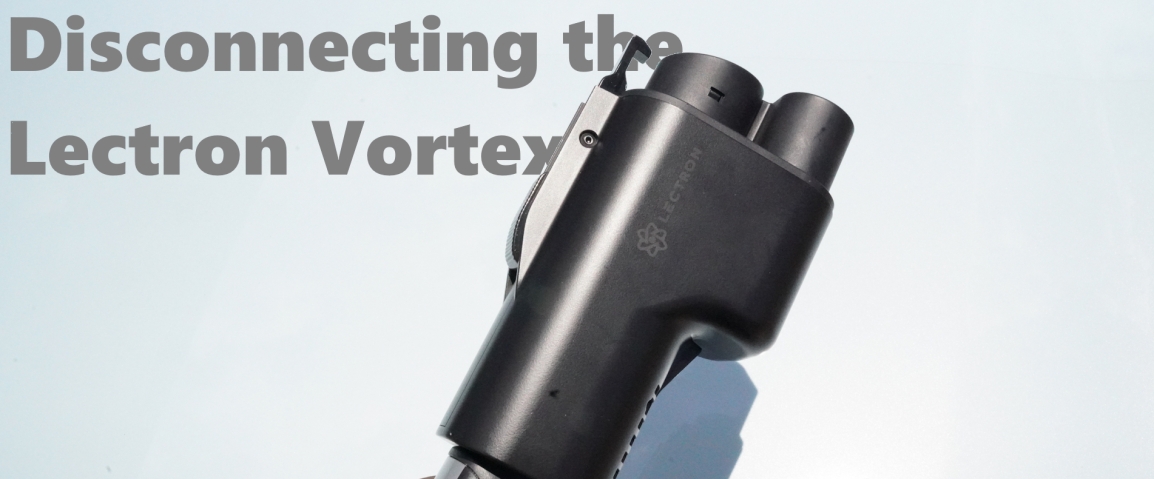If you are reading this, chances are you were searching for information on disconnecting the Lectron Vortex adapter stuck on that Super Charger. I’ll give the answer to that priority.
- Keep the NACS to CCS adapter connected to your car
- Grab onto the NACS cable and apply pressure as though you were pushing it into your car
- Squeeze the NACS release cable. This will require significant force. You may have to start squeezing with both hands
- Pull or work the cable out. I’ve had to use a bit of a rotation moment to work one out
Step 2 is key. If you don’t push the adapter in a little before pressing the disconnect lever, the adapter can prevent the disconnect lever from going down.
What’s Going On Here
Now that I’ve gotten the information for the people that have found themselves in a desperate situation out of the way, I’ve gor more to say on what’s going on here. Tesla has opened their chargers to a wider variety of cars. The Version 4 super chargers have adapters built in so that they can connect to both Teslas (NACS interface) and non-Teslas (CCS interface). For the Version 3 Super Chargers (which are more widely deployed) there is no built in adapter. A driver can buy an adapter to keep in their car and use as needed. However, compared to the demand, those adapters are in short supply. People that have ordered them from Tesla may see deliver dates that are several months out. This can be a significant disadvantage for those that need to take long trips where charging options may be few. Rather than delay a trip, one might decide to get an adapter for upcoming trips to open up their options. However, note that often times the car manufacturer may prohibit the usage of a third party adapter for DC Fast Charging. Tesla also prohibits the user of third party adapters with their chargers. The key advantage that the third party adapters have over the Tesla adapter is that they are available.
What are the Third Party Options
There are a total of 2 third party adapters available in the USA at the time that I am writing this. Those are the Lectron Vortex and the A2Z Typhoon. Neither is approved by Tesla. Tesla has yet to announce a certification program.
Lectron’s first release of the Vortex had an issue where it was possible to disconnect the NACS without terminating the charging or pressing the release levers. This could have dangerous outcomes! Lectron did a recall and released an updated version of their adapter. In the update, I think they may have overcorrected. In the current version that is available, it is difficult to operate the lever and move it far enough to release the charger. While I’ve seen complaints about the need to remember to engage the lock on the A2P Typhoon. I don’t have experience with the Typhoon myself. I do have a Vortex.
Though I didn’t need a charge, I drove to a local super charger to test how the adapter fits with the car and the Super Charger’s NACS interface. When I was disconnecting, I ran into serious problems in trying to disconnect. It took me about 20 minutes to disconnect the cable. Afterward, I contacted Lectron to complain. They gave me the procedure in the begining of this post. I was hesitant to try it at another Super Charger. I did acquire an adapter with a NACS end to connect to my adapter to try the procedure. It was difficult, but it worked. While watching TV, I casually tried the procedure several more times. Later, I noticed after several inserts and disconnects, that the spring for the lever felt less agressively tight in a good way. It may be the case that with enough insert cycles that the device will settle on a reasonable grip level.
If I Get One of These, Can I Use Tesla Chargers?
Getting an adapter might not be sufficient to use a v3 Super Charger. In addition to having capabilities for interfacing (whether through having a NACS interface built in or having an adapter) the vehicle must also be authorized to use the charger. To date, Tesla has only authorized Rivian and Ford electric vehicles to use Tesla chargers. Other manufacturers have announced that they are partnering with Tesla to make charging evailable to their vehicles. But that is a promise that is yet to take usable form. GM was announced to be the next manufacturer with authorization after Ford. They had announced that they would have availability by the end of Spring 2024. Prior to then, Elon Musk laid off the entire Super Charger team. That likely had an impact on the GM integration and authorization of Super Charging. Some have reported that GM had the adapter listed for purchase for owners of their EVs for 35 USD. This is far less than the 200 to 249 USD price on the ohter adapters. But given that Tesla is behind on delivering the charger adapters to ford EV owners, the timeline for the rollout of other brands is more uncertain.
Mastodon: @j2inet@masto.ai
Instagram: @j2inet
Facebook: @j2inet
YouTube: @j2inet
Telegram: j2inet
Twitter: @j2inet






